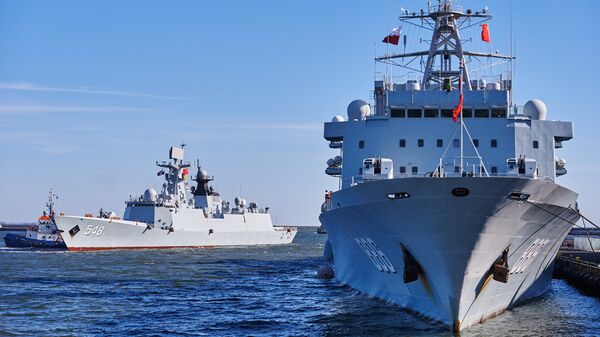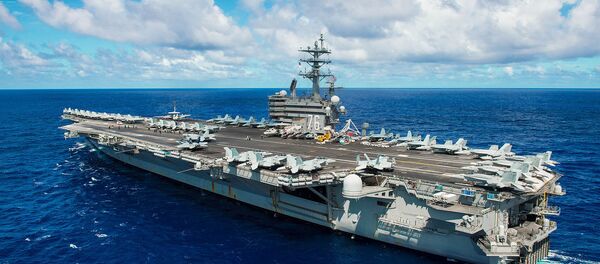In the 1990s and early 2000s the surface fleet of the People’s Liberation Army Navy (PLAN) was mostly comprised of fast attack craft armed with torpedoes and missile weaponry, bolstered by a number of mostly outdated destroyers and frigates. Its most modern vessels were several Russian-made Sovremenny-class destroyers, Luhai destroyers and Jiangwei frigates, Cheng points out.
The submarine fleet consisted primarily of antiquated Romeo-class, Ming-class and Song-class boats, with only a small number of Han-class nuclear-powered vessels.
The bulk of Chinese Naval Aviation used to consist of F-6 and F-7 fighters (Chinese copies of the Soviet MiG-19 and MiG-21 respectively), and H-6 bombers (copies of Soviet Tu-16).
However, a fundamental shift in the PLAN’s policies had occurred in the past decade and a half, according to Cheng.
The most obvious innovation was the commissioning of the Liaoning, first Chinese aircraft carrier, which "can already establish a bubble in areas such as the South China Sea where opposing aircraft and helicopters, such as those used for anti-submarine warfare (ASW) duties, would find it difficult to operate freely," Cheng points out.
During 2000s China produced over 60 Houbei/Type 022 fast attack craft – low-radar signature vessels outfitted with anti-ship cruise missiles. According to Cheng, these ships are now being slowly replaced by Jiangdao/Type 056 corvettes – larger vessels which possess better endurance and sea-keeping.
The PLAN’s logistics were also improved by the addition of a number of new replenishment vessels, something that China previously had in very short supply.
China’s submarine fleet was strengthened by the addition of about a dozen Russian-produced Kilo-boats and the domestically-manufactured Yuan-class boats. Furthermore, China also commissioned several new Shang/Type 093 nuclear-powered submarines, Cheng adds.
The Chinese Naval Aviation is also undergoing significant modernization. Along with the addition of over 100 JH-7 Flying Leopard strike aircraft, its inventory was also supplemented by fourth-generation and 4.5-generation fighter aircraft such as J-10, J-11 and Su-30.
While resurgent PLAN is unlikely to be able to establish sea control over key waterways such as the Arabian Sea or Indian Ocean, Cheng claims. However, when it comes to the near seas like the East and the South China Seas, the Chinese navy is a force to be reckoned with as it "already outmatches every regional navy, with the possible exception of the Japanese Maritime Self-Defense Force."




